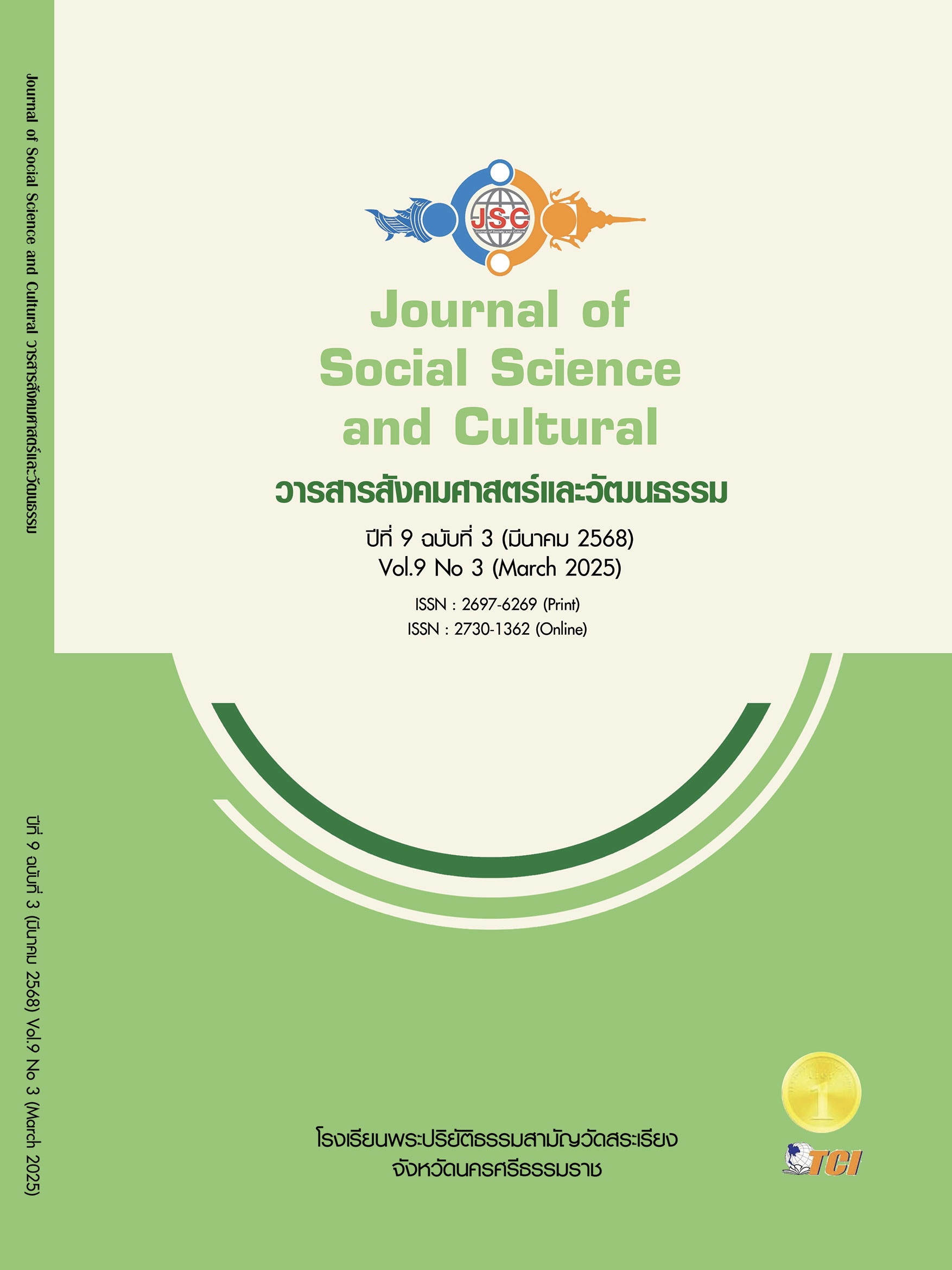THE CAUSAL FACTORS OF LOGISTICS SERVICE QUALITY AFFECT THE INTENTION TO COMPLY WITH PERSONAL DATA PROTECTION REGULATIONS AMONG SMALL AND MEDIUM-SIZED LOGISTICS SERVICE PROVIDERS IN THAILAND
Main Article Content
Abstract
This research article aims to examine the causal factors affecting the quality of logistics services, analyze the influence of customer satisfaction on compliance intention, and propose strategies for enhancing logistics service personnel capabilities. A mixed-methods research approach was employed. The sample consisted of 400 participants, including executives, supervisors, and relevant staff. The key informants included 30 senior executives, supervisors, and responsible personnel, selected via purposive sampling. Research instruments included questionnaires and semi-structured interviews. Data collection methods included surveys, in-depth semi-structured interviews, and focus group discussions. Statistical analysis involved calculating means, standard deviations, and using LISREL for structural equation modeling, along with thematic and content analysis. The key findings of the study are as 1) The causal factors affecting logistics service quality were rated highly overall, with the variable (SP) receiving the highest mean score, while (OP) had the lowest. 2) Confirmatory factor analysis confirmed a high level of data fairness. 3) Fairness in customer data management and customer satisfaction had a direct impact on compliance intention among logistics service providers. The proposed strategies for enhancing logistics service personnel capabilities include 1) Developing personnel skills in data management, 2) Strengthening transparency and communication with customers, 3) Improving data security systems, 4) Establishing systematic data management guidelines, and 5) Promoting the adoption of international standards in data management.
Article Details
References
ธานินทร์ ศิลป์จารุ. (2563). การวิจัยและวิเคราะห์ข้อมูลทางสถิติด้วย SPSS และ AMOS. (พิมพ์ครั้งที่ 18). กรุงเทพมหานคร: สำนักพิมพ์บิสซิเนสอาร์แอนด์ดี.
สำนักงานคณะกรรมการคุ้มครองข้อมูลส่วนบุคคล. (2566). แนวปฏิบัติสำหรับผู้ควบคุมข้อมูลส่วนบุคคลและผู้ประมวลผลข้อมูลส่วนบุคคล. เรียกใช้เมื่อ 27 กุมภาพันธ์ 2567 จาก https://www.pdpc.or.th/pdpc-book/pdpc-guidelines/
สำนักงานคณะกรรมการพัฒนาการเศรษฐกิจและสังคมแห่งชาติ. (2565). รายงานภาวะเศรษฐกิจและแนวโน้มปี 2565. เรียกใช้เมื่อ 15 เมษายน 2567 จาก https://www.nesdc.go.th/ewt_dl_link.php?nid=12810
สำนักงานที่ปรึกษาการศุลกากร ณ กรุงบรัสเซลส์. (2562). ภาพรวมของกลไกของ EU ในการถ่ายโอนและการคุ้มครองข้อมูลส่วนบุคคลในประเทศที่สาม. CPMU News, 4(4), 5-7.
Colesky, M. et al. (2016). A critical analysis of privacy design strategies. In 2016 IEEE security and privacy workshops (SPW). IEEE.
European Data Protection Board. (2017). Guidelines on data protection impact assessment (DPIA) and determining whether processing is “likely to result in a high risk” for the purposes of Regulation 2016/679 (WP248). Retrieved April 15, 2024, from https://ec.europa.eu/newsroom/article29/items/611236/en
Fuster, G. G. (2014). The emergence of personal data protection as a fundamental right of the EU (Vol. 16). Brussels: Springer Science & Business.
Gefen, D. et al. (2003). Trust and TAM in online shopping: An integrated model. MIS quarterly, 27(1), 51-90.
Kline, R. B. (2016). Principles and Practice of Structural Equation Modeling. New York: The Guilford Press.
Kuner, C. (2010). Data protection law and international jurisdiction on the Internet (part 1). International Journal of Law and Information Technology, 18(2), 176-193.
Lee, J. et al. (2022). Investigating perceptions about risk of data breaches in financial institutions: A routine Activity-approach. Computers & Security, 121(2), 102832.

